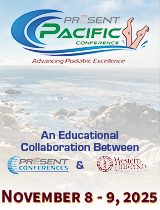From: James Whelan, DPM
The recent decision by the American Podiatric Medical Association (APMA) to decline the Accreditation Council for Graduate Medical Education (ACGME) invitation is both prudent and necessary. While the prospect of aligning with ACGME may seem appealing on the surface, the risks far outweigh the perceived benefits. Podiatry has fought long and hard to establish its own standards of surgical training, professional autonomy, and pathways to credentialing. Turning oversight of residency education over to an external body with no podiatric expertise jeopardizes this progress. ACGME’s track record is strong for MD and DO training, but its framework does not account for the unique surgical depth and scope of podiatric medicine. Dilution of these standards could undermine the very foundation of our profession.
Equally important, the APMA did not act in isolation. Independent assessments by ABFAS, AACPM, ACFAS, COTH, CPME, and multiple state societies reached the same conclusion: participation in the exploratory process posed more risk than reward. This was not a rash decision, but a unified stance across leadership organizations committed to protecting podiatric integrity.
The path forward is not about chasing parity by adopting external validation; it is about strengthening and elevating our own systems. By investing in residency quality, board certification processes, and continuing to advocate for recognition through established podiatric channels, we preserve the autonomy and excellence that set our profession apart. APMA’s rejection of the ACGME task force is not a missed opportunity—it is a reaffirmation of podiatry’s right to define its own future.
James Whelan, DPM, Beloit, WI
From: Robert Boudreau, DPM
I was blessed to work in Clifford McEntire’s office as an orthotic technician during my undergraduate studies. He taught me not only how to fabricate orthotics, but the biomechanical principles behind them. It was during this part-time job that I fell In love with the profession of podiatry. As a member of the CCPM Class of 1983, we were privileged to sit at the feet of Merlin Root, John Weed, Chris Smith, Ron Valmassey, Bill Sanner, and others. As such, I feel our biomechanical instruction was excellent. I used their teaching on a daily basis, incorporating it both with and without surgery, for 39 years until my retirement.
I have a few questions: How many practitioners actually watch their patients walk and evaluate their gait before/after surgery? Before/after orthotic dispensing? How many residencies are either specifically dedicated to biomechanics or require rotations in biomechanics, and if so, who is doing the training? As a profession, we stress forefoot, rearfoot, and ankle surgery, but are we equally stressing how orthotics can be utilized peri-operatively?
As a profession, I feel we should stress our biomechanical expertise, the area that truly sets us apart from our orthopedic counterparts.
Robert Boudreau, DPM (Retired), Tyler, TX







